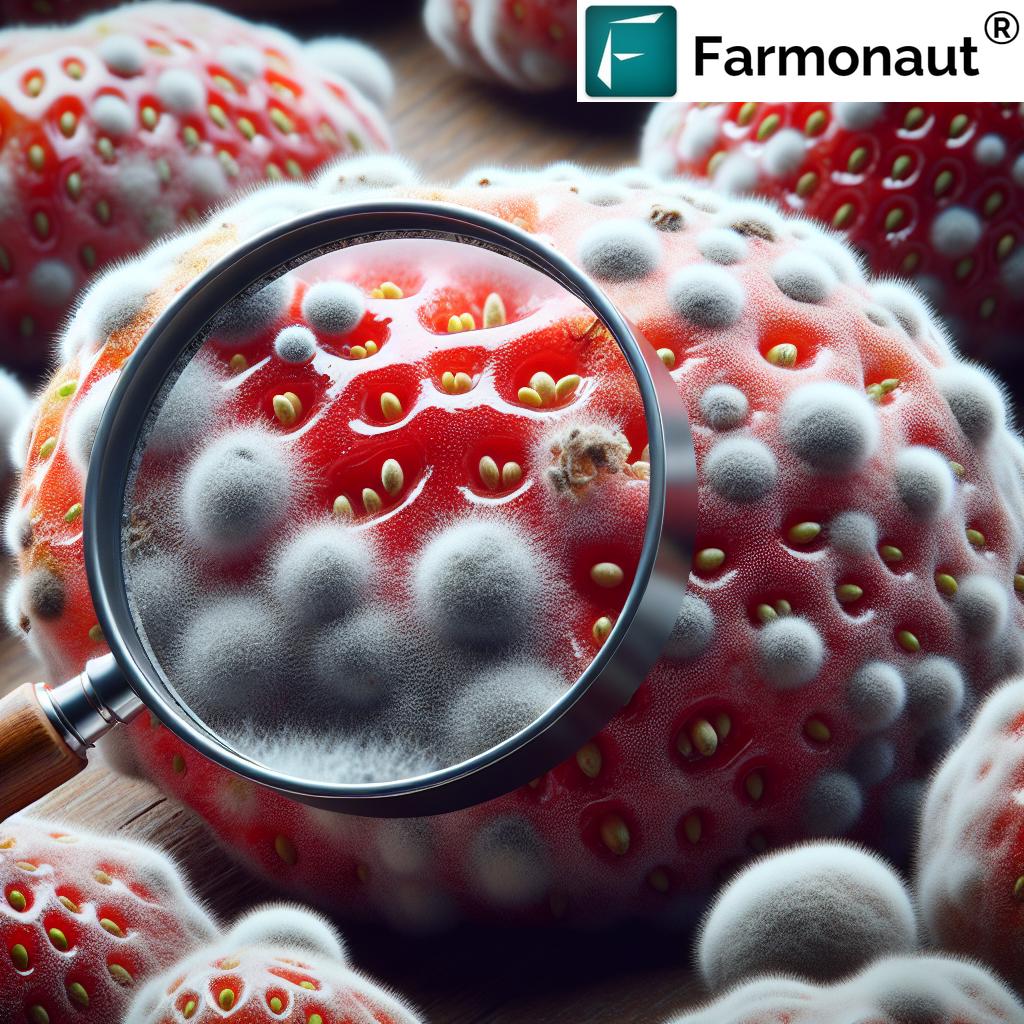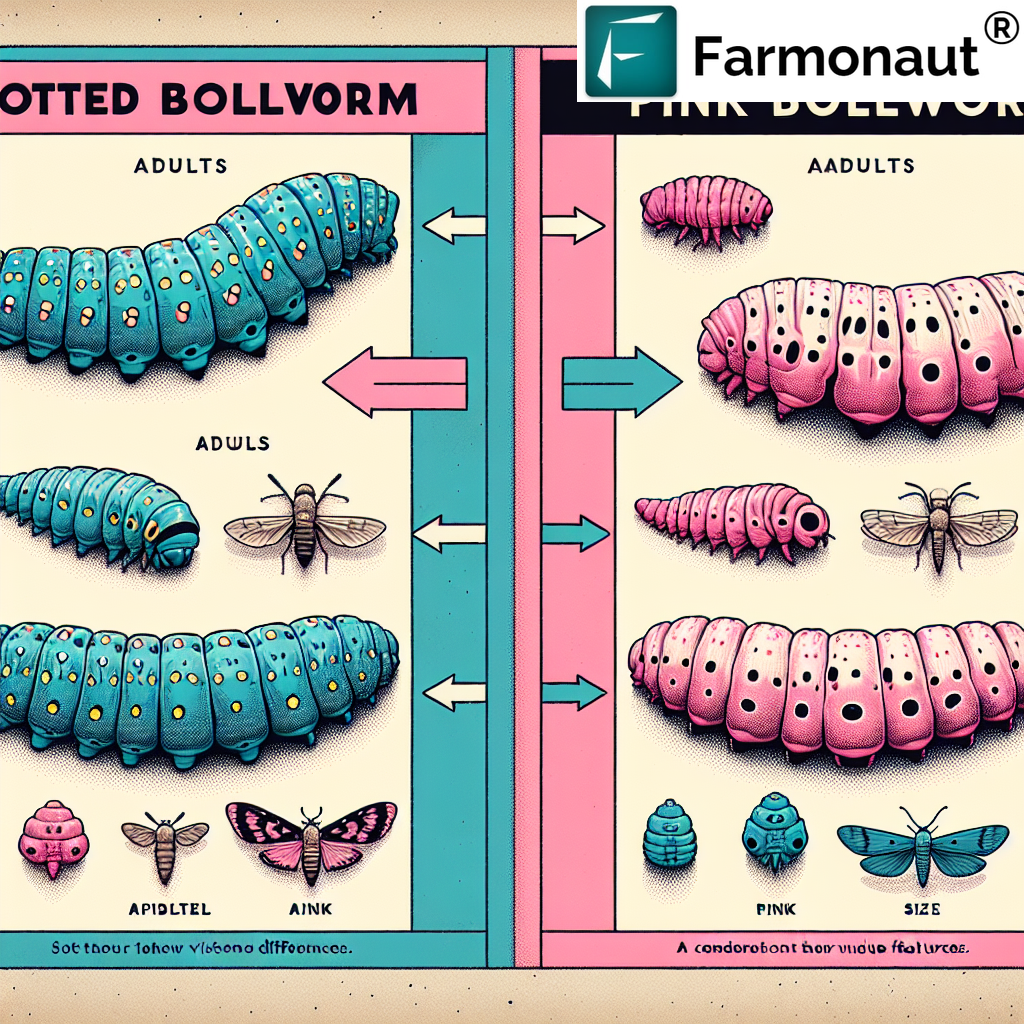How to Plant Oil Palm: Unlock Explosive Growth Secrets
“Oil palm yields can reach up to 4 tons of oil per hectare annually with proper site selection and care.”
Table of Contents
- Introduction to Oil Palm Cultivation
- Site Selection and Preparation
- Tropical Oil Palm Growth Conditions
- How to Grow Healthy Oil Palms – Nursery Management
- Land Clearing, Pit Preparation, and Planting
- Oil Palm Irrigation Requirements
- Oil Palm Fertilizer Application
- Weed and Pest Control in Oil Palm
- Intercropping and Cover Cropping Practices
- Optimal Post-Planting Care and Monitoring
- Step-by-Step Oil Palm Planting Schedule Table
- Farmonaut Advanced Solutions for Oil Palm Plantation
- Oil Palm Cultivation FAQ
- Conclusion
Introduction to Oil Palm Cultivation
Oil palm (Elaeis guineensis) is globally recognized as a highly productive tropical crop, forming the backbone of the world’s vegetable oil industry. Renowned for its high oil yield and economic value, oil palm cultivation demands deliberate planning, stepwise execution, and optimal management practices. By mastering the crucial steps—from site selection to soil preparation, water management, nursery establishment, fertilizer application, and ongoing care—we ensure a healthy start and sustainable productivity for our palms.
In this comprehensive oil palm planting guide, we distill decades of research and field-tested methodologies into practical, actionable steps for maximizing both yield and palm health. Whether you are an individual grower or manage large plantations, these best practices are calibrated for high productivity and long-term sustainability in tropical climates.
Site Selection and Preparation: Foundation for Explosive Growth
Why Is Oil Palm Site Selection Critical?
The success of oil palm cultivation begins with choosing the right site. Our palms demand optimal conditions: flat or gently undulating terrains that are easy to mechanize, deep and rich soils to accommodate their extensive root systems, and locations free from harsh environmental hazards.
- Soil Requirements: The optimal soil for oil palm is deep, well-drained, and rich in organic matter.
- Soil Depth: At least 1 meter to allow ample root development.
- Drainage: Avoid waterlogging-prone areas and salinity or alkaline soils where plant health and nutrient uptake can suffer.
- Soil Testing: Conducting a comprehensive soil test is recommended to assess nutrient levels, pH, and organic content, supporting informed amendments and fertilization rates.
Locations with high rainfall, consistent temperature, and access to clean water ensure favorable growth conditions. Conversely, rocky soils, shallow profiles, or areas susceptible to flooding or salinity should be strictly avoided.
For detailed field-level insights and to monitor soil moisture or assess the suitability of your site, we recommend leveraging Farmonaut’s Satellite-Based Crop Health Monitoring. This technology uses multispectral satellite imagery for real-time insights on soil characteristics, vegetation health, and overall site suitability—visit the large-scale farm management solution to explore these benefits.
Steps for Soil and Land Preparation
- Clearing Existing Vegetation: Remove shrubs, stumps, weeds, and residual trees. Avoid indiscriminate field burning; instead, opt for mechanical removal to preserve organic matter and soil structure.
- Plowing and Harrowing: Plow the land thoroughly and harrow to break up and aerate the soil. This promotes deeper root growth and even moisture penetration.
- Marking and Pitting: On flat terrains, mark out regular planting intervals—typically 8 to 9 meters apart—to allow each oil palm adequate space. Dig uniform planting pits, each measuring 60 cm x 60 cm x 60 cm.
Accurate site selection and meticulous planning at this stage influence oil palm growth and production over the entire 25-year cropping cycle.
Tropical Oil Palm Growth Conditions and Requirements
To unlock the full potential of oil palms, site selection must be complemented by ideal climate conditions. Oil palm is inherently a tropical crop, thriving within 10 degrees latitude of the equator.
- Temperature: Optimal range is 24°C to 28°C (75°F to 82°F) throughout the year. Temperatures outside this range may reduce growth rates and yields.
- Rainfall: Require a minimum of 2,000–2,500 mm annually, evenly distributed for optimal moisture balance.
- Sunlight: At least 5–6 hours of direct sunlight daily is crucial for photosynthesis and vigorous growth.
- Humidity: Preferably kept above 80% for robust development.
Failure to meet these requirements can lead to stressed palms, reduced oil content, or increased susceptibility to pests and disease.
“Optimal nursery management can boost oil palm seedling survival rates to over 90% before field transplantation.”
How to Grow Healthy Oil Palms – Optimal Nursery Management
One of the most important factors in oil palm cultivation is robust nursery management. Healthy, vigorous seedlings are the foundation for a high-yielding plantation.
Step-by-Step Guide to Oil Palm Nursery Management
-
Seed Selection and Germination:
- Choose only fresh, high-quality seeds from reputable sources.
- Soak seeds for 5–7 days, changing water daily.
- Dry in the shade for 2 hours, then place in polythene bags and put in a germinator at 39°C (102°F).
- Germination typically completes in 10–12 days.
-
Nursery Site Preparation:
- Choose well-drained, flat land for the nursery.
- Fill durable, black polythene bags with sandy loam or loam topsoil enriched with organic matter.
- Firmly water bags for a week before planting seeds.
-
Seedling Care and Management:
- Maintain a shaded environment to avoid sun scorch.
- Practice regular watering and mulching to maintain soil moisture and temperature.
- Monitor for pests and disease—remove affected seedlings immediately.
- Duration: Grow seedlings for 10–12 months or until they achieve 1–1.3 meters in height and exhibit at least 13 functional leaves—this signals readiness for field planting.
To enhance nursery efficiency and survival rates, utilize Farmonaut’s crop plantation/forest advisory functionalities for AI-driven monitoring and best-practice recommendations. Such digital tools streamline water and nutrient scheduling and facilitate efficient monitoring—giving your palms the best possible start.
Land Clearing, Planting Pits, and Transplanting Seedlings
Land Clearing and Soil Preparation
Prior to planting, proper land clearing is vital. Remove all vegetation, roots, and debris to promote optimal establishment while preserving soil health. Mechanical clearing is recommended for minimal organic matter disruption.
Planting Pits and Spacing
- Pit Size: Each palm should be planted in a pit of 60 cm x 60 cm x 60 cm.
- Spacing: Standard spacing is 8–9 meters, providing about 60 plants per acre. This ensures enough space for canopy expansion, root system development, and access for management operations.
Best Season for Oil Palm Planting
- Rainy Season: Planting should coincide with the onset of rains (typically June to December). This ensures soil is sufficiently moist for root establishment and reduces supplemental irrigation needs.
Transplanting Process
- Transplant seedlings from the nursery when they are 10–12 months old and have attained the requisite size and number of leaves.
- Place seedlings at the center of each pit and fill in soil carefully, firming gently to prevent air pockets.
- Water thoroughly at transplant and maintain adequate moisture, especially in the first few weeks.
Proper transplanting and attentive care at this stage will facilitate quick establishment, setting the palm up for explosive growth in subsequent seasons.
Oil Palm Irrigation Requirements and Water Management
Water is another pillar of successful oil palm cultivation. Both young and mature palms have high water requirements for optimal growth and high yields.
- Young Seedlings: Require regular watering—at least 10–15 liters per palm per week, adjusted for rainfall, until fully established.
- Adult Palms: Can require up to 150–200 liters of water per day, with demand rising to 300 liters during the hottest months or drought spells.
- Water Quality: Use clean, non-saline water to avoid residue buildup or toxicity.
- Irrigation Methods: Basin, drip, or microjet systems are most effective for efficient water use and targeted application. Basin irrigation is suitable for smallholder fields, while micro-irrigation offers better control in large plantations.
For accurate, field-level soil moisture tracking and predictive irrigation scheduling, utilize Farmonaut’s satellite-based insights. Track real-time soil moisture, optimize irrigation timing, and minimize water wastage—all integrated on your mobile or web dashboard.
Oil Palm Fertilizer Application for High Yields
Oil palms are among the most nutrient-demanding crops. Careful fertilizer application is essential for robust growth, optimal yields, and extended productivity.
- Macronutrients: Nitrogen (N), phosphorus (P), and potassium (K) are the primary requirements. Secondary nutrients include magnesium, calcium, and sulfur.
- Application Rates: Adjust rates and composition based on soil test results and the age of the palms.
- Schedule: Fertilize every three months, beginning from June/July each year. Organic matter and neem cake can be incorporated in the second annual application to improve soil health.
- Methods: Evenly broadcast fertilizer in a ring or apply in shallow basins, synchronizing with rainfall to avoid nutrient losses.
For precision fertilization decisions, monitor palm health and soil nutrient levels using Farmonaut’s satellite crop health API and developer documentation. For commercial and large-scale growers, such technological integrations help optimize inputs, reduce wastage, and maximize yield.
Weed and Pest Control in Oil Palm
Robust weed and pest control is non-negotiable for protecting oil palms and maintaining high productivity.
Weed Management
- Manual Weeding: Essential during the first two years. Clear basins (1–3 meter radius as palms mature) every 30–60 days.
- Chemical Control: Glyphosate is a recommended herbicide, but always adhere to recommended doses to protect palms, beneficial organisms, and surrounding crops.
- Mulching: Apply organic mulch to suppress weed germination, preserve soil moisture, and improve soil organic matter.
Pest and Disease Management
- Regular Monitoring: Early detection is critical—inspect leaves, stems, and fruit bunches for signs of insect damage, fungal infections, or unusual discoloration.
- Integrated Pest Management (IPM): Combine cultural (crop rotation, clean planting material), biological (beneficial insects), and chemical controls for sustainable pest suppression with minimum environmental impact.
Digital crop scouting and automated health alerts are possible with Farmonaut’s AI-based advisory and monitoring, ensuring targeted intervention at early stages.
Intercropping and Cover Cropping Practices for Early Years
In young plantations (first 2–3 years), wide inter- and intra-row spaces provide an opportunity for intercropping and cover cropping. These practices improve land use efficiency, provide additional income, and enhance soil health.
- Intercropping: Grow compatible short-cycle crops (e.g., legumes, vegetables) between oil palm rows. Ensure selected crops do not compete excessively for nutrients or water.
- Cover Cropping: Sow sun hemp, calopogonium, or related species. They reduce soil erosion, improve organic matter, suppress weeds, and buffer hot winds.
- Rotation: Rotate intercrops/cover crops annually to prevent pest/disease buildup and deplete specific nutrients.
Periodic aerial monitoring with Farmonaut’s carbon footprinting solution further helps track ground cover, estimate environmental impact, and document sustainability initiatives.
Optimal Post-Planting Care and Monitoring
Continuous management is vital—after planting, vigilance ensures robust palm development and early fruiting. The following ongoing practices protect your investment:
- Basin Management: Maintain and expand planting basins annually (1 meter radius in year 1, 2 meters in year 2, 3 meters in year 3); weed basins regularly.
- Mulching: Keep a thick organic mulch zone around the base to conserve moisture, suppress weeds, and provide slow-release nutrients.
- Health and Growth Monitoring: Routinely check for stress signs, abnormal growth, pest or disease outbreaks, and adjust management accordingly.
- Yield Recording: Start harvest yield tracking from year 3–4 onward; continual records enable early interventions and optimize future management.
Farmonaut’s blockchain-based traceability platform can be utilized to secure, audit, and transparently record every stage of your crop’s journey—vital for quality assurance, certification, and premium market access. Fleet management and logistics optimization are available via the Farmonaut fleet management solution.
Step-by-Step Oil Palm Planting Schedule Table
| Step/Activity | Timing (Months/Days) | Estimated Inputs | Best Practices |
|---|---|---|---|
| Site Selection & Initial Planning | 0 (Pre-planting) | n/a | Choose flat, deep, well-drained soils; conduct soil test; avoid waterlogged/saline areas. |
| Land Clearing & Soil Preparation | Month 1 | Clearing tools, tractor/plow | Mechanical clearing preferred; retain organic matter where possible; plow and harrow land twice. |
| Nursery Establishment | Month 1–12 | 1,200-1,500 polythene bags/ha; high-quality seeds | Use sandy loam soil in bags; keep shaded; maintain daily watering and mulching. |
| Seed Germination | Days 1–13 | 1,200–1,500 seeds/ha | Soak seeds 5–7 days, germinate at 39°C in polythene; plant direct in bags post-germination. |
| Weeding & Pest Control (Nursery) | Throughout | Manual tools/herbicide | Remove weeds weekly; monitor for pests; apply recommended treatments promptly. |
| Field Transplanting | Month 10–12 | 60 seedlings/acre (150/ha), each in 60x60x60cm pit | Transplant at 10–12 months old, during rainy season; water after transplanting. |
| Fertilizer Application | Every 3 months (Year 1+) | NPK: 0.5–1 kg/palm/app; organic matter/neem cake applied twice annually | Adjust rates to soil test; apply evenly around basin; water after application if dry. |
| Irrigation Management | Weekly (Year 1), Daily (drought) | 10–15 L/seedling/week (initial); up to 200–300 L/palm/day (adult) | Install drip/basin systems; maintain soil moisture but avoid standing water. |
| Weed, Pest & Basin Management | Every 1–2 months | Herbicide/manual labor; mulch | Expand basin radius yearly; suppress weeds; mulch at least annually. |
| Intercropping/Cover Cropping | Year 1–3 | Leguminous seeds or short-cycle crops | Sow ground cover after planting; rotate crops annually; monitor for competition. |
| Post-Planting Monitoring | Continuous (Year 1+) | Farmonaut App, scouting | Monitor health, yield, pests, and environmental parameters; adjust care as needed. |
Farmonaut Advanced Solutions for Oil Palm Plantation
At Farmonaut, our mission is to make precision agriculture affordable and accessible for oil palm growers of every scale. Our innovative platform harnesses satellite imagery, AI, blockchain, and data analytics to address common challenges in oil palm management—from field-level health monitoring to resource optimization and digital traceability.
-
Satellite-Based Crop Health Monitoring: Track NVDI, soil moisture, and plant stress in real time. Make smarter, data-driven decisions for watering, fertilizer application, and pest control.
See our Large-Scale Farm Management Platform >> - AI-Driven Jeevn Advisory: Get customized crop management advice, weather alerts, and predictive yield models to maximize your plantation’s productivity.
-
Blockchain-Based Traceability: Ensure transparent, secure record-keeping from seed to harvest, essential for premium markets and export certification.
Learn more >> - Resource Management Tools: Monitor farm resources, streamline irrigation scheduling, and deploy targeted inputs to minimize wastage and environmental impact.
-
Carbon Footprinting: Measure and mitigate the carbon emissions of your entire operation, supporting sustainability and compliance with green agriculture initiatives.
Read More >> -
Crop Loan and Insurance Verification: Leverage satellite-verifiable data to support loan and insurance applications, decreasing fraud and securing better financing options.
Explore Crop Loan & Insurance Tools >> -
Fleet and Logistics Management: Track agricultural machinery and vehicles for cost reduction, improved safety, and operational transparency.
See Fleet Management Solutions >>
Deploy Farmonaut on android, iOS, or browser/web app—and if you need to integrate farm data into your proprietary enterprise systems, access our comprehensive API and developer docs.
Oil Palm Cultivation FAQ
What is the best soil type for oil palm cultivation?
The optimal soil for oil palm is deep, well-drained, sandy loam or loam soils, rich in organic matter and with a minimum depth of one meter for root growth.
What are the recommended planting distances and pit sizes?
Standard spacing is 8–9 meters between each palm, with planting pits sized at 60 cm x 60 cm x 60 cm. This allows sufficient canopy and root expansion.
When is the best time to plant oil palm?
The rainy season (typically June to December) is ideal for oil palm planting, ensuring soil moisture for seedling establishment.
How much water do oil palms require?
Mature palms require 150–200 liters of water per day, increasing to 300 liters in peak heat. Young seedlings need 10–15 liters per week until well-established.
How is fertilizer applied in oil palm plantations?
Apply NPK fertilizers and organic matter at recommended rates, usually every three months, based on soil test results and palm age. Fertilizer is typically spread in a ring or shallow basin around each palm.
Which pests and diseases affect oil palm most commonly?
Common threats include rhinoceros beetle, leaf-eating caterpillars, and fungal infections. Regular monitoring and integrated pest management strategies are essential.
What digital tools can support oil palm cultivation?
Farmonaut provides satellite-driven, AI-advised solutions for crop health monitoring, resource allocation, traceability, and fleet management, accessible via mobile and web app.
Is intercropping possible with oil palm?
Yes! In the initial 2–3 years, short-cycle or leguminous crops can be intercropped to improve soil fertility and increase land use efficiency.
Conclusion: Your Path to Explosive Oil Palm Growth Starts Here
Oil palm cultivation is a long-term, high-reward venture that requires comprehensive planning and diligent management. By following the correct steps in site selection, soil and water management, nursery establishment, fertilizer application, weed and pest control, and continuous monitoring, we position our palms for optimal establishment, accelerated growth, and sustained yield over decades.
Integrated digital tools—like Farmonaut’s satellite, AI, and blockchain-based platform—can dramatically enhance precision, efficiency, and profitability at every stage. With affordable access via web and mobile, we unlock the full power of modern agriculture for both individual farmers and large plantations worldwide.
Enrich your oil palm planting journey with science, technology, and operational excellence. For actionable advice, real-time monitoring, and precision support,
download the Farmonaut app today
.












